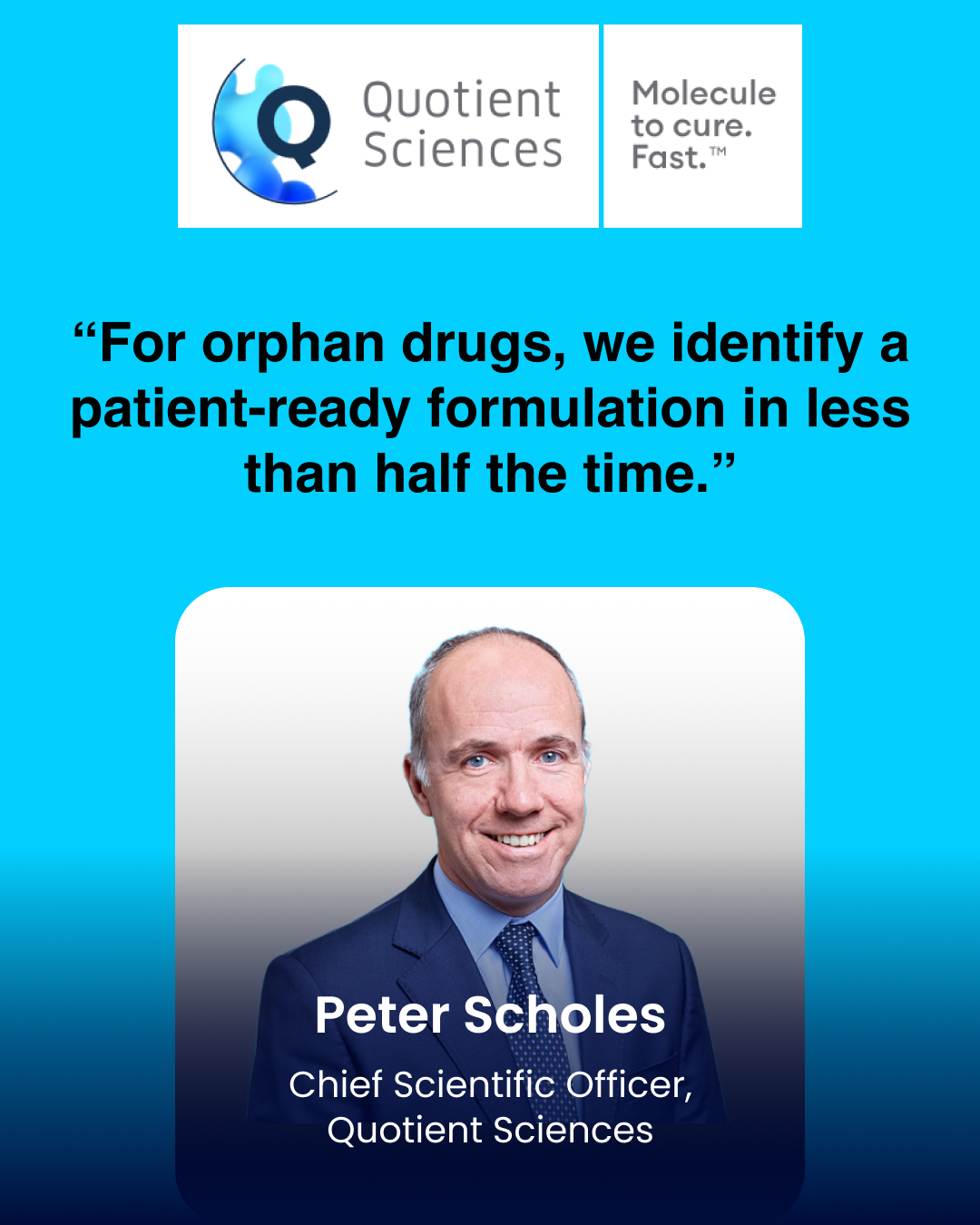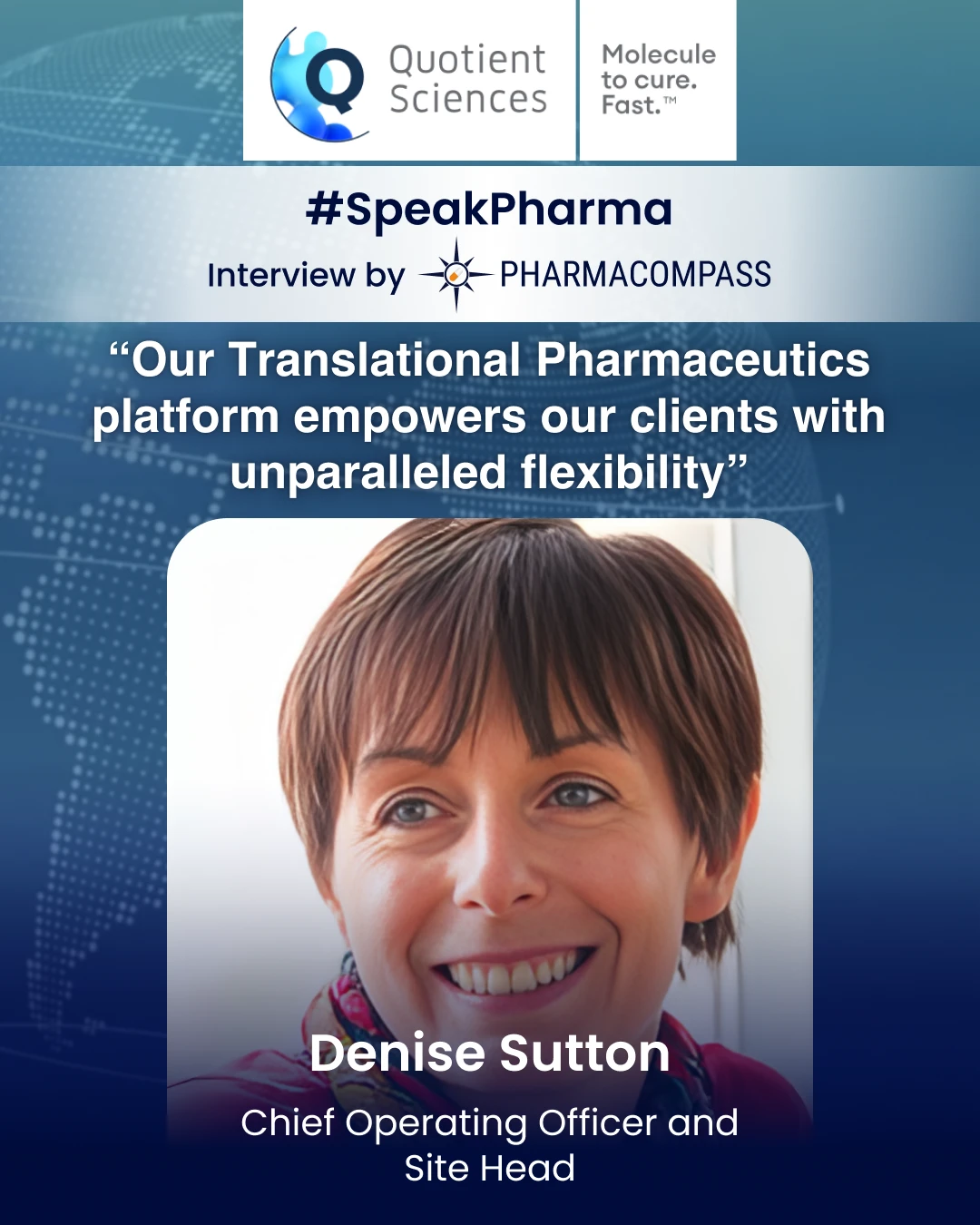
#SpeakPharma with Quotient Sciences
2021-02-08
Impressions: 4590
This week, SpeakPharma interviews Dr. Peter Scholes, Chief Scientific Officer, Quotient Sciences, who talks about orphan drugs and some of the challenges drug developers face while developing them. In particular, Dr. Scholes tells us how Quotient Sciences has demonstrated the benefits of embedding formulation flexibility within first-in-human trials to enable rapid identification of a “patient ready” formulation. This way, Quotient helps customers get ready for proof-of-concept studies in an average of 12 months, which is less than half the time when compared with the industry standard.
What exactly are orphan drugs?
An orphan drug is a drug for a rare disease or condition, affecting a small percentage of the population — in the US, it is less than 200,000 people, while in the EU, it is not more than one in 5,000 people. Worldwide, there are over 300 million people living with one or more identified rare diseases, representing 3.5 to 5.9 percent of the global population.
Some rare disease treatments have been “orphaned” or discontinued because there was not enough financial incentive to continue development or production. To encourage industry R&D, the US Food and Drug Administration’s Orphan Drug Act (which Europe reciprocated in 1999 via the Orphan Drug Regulation) incentivizes drug development for rare diseases. These regulatory frameworks recognize the importance of developing new treatments to address unmet clinical needs.
Why is orphan drug development for rare diseases so important?
Global regulatory agencies have sought to provide an impetus to pharma and biotech organizations for the development of new therapeutics for orphan diseases by offering enhanced regulatory support, expedited review times, reduced submission fees and market exclusivity periods. We have seen the benefits of these incentives most prominently in the US, with over 50 percent of NDA approvals in the last two years being for rare diseases. In Europe, of the 66 new medicines authorized by the EMA in 2019, seven (~10 percent) were orphan drugs. From a global perspective, it is estimated that approximately 30 percent of new drugs in development today are focused in these therapeutic areas. This is a great success story, but much more needs to be done to address global patient needs.
Tell us about some of the challenges drug developers face while developing orphan drugs?
Of late, we have seen four major chemistry, manufacturing, and control (CMC) challenges in the orphan drug space, which are arguably exacerbated by regulators providing pathways for expedited development.
The overarching challenge is the effective development of patient-centric dosage forms based upon molecule properties and patient needs, particularly given the fact that many rare diseases will be in pediatric populations.
The second major challenge is quickly identifying optimized drug products, whose performance is preferably demonstrated in humans prior to initiating protracted, difficult-to-recruit patient trials.
Moreover, implementing a tailored manufacturing and supply plan for drug products into these patient trials also requires careful consideration. Finally, finding a long-term partner for scale-up and commercial manufacturing of what will inevitably be a low-volume product also poses as a challenge.
What are the key factors to consider while selecting a CDMO partner for orphan drugs?
While there is no shortage of CMC vendors in the marketplace, you need to select a partner who will provide maximum flexibility and agility to accommodate the inevitable CMC scope changes in a program, and can also bring expertise in clinical and regulatory elements. Always ask yourself the question: “Can my preferred vendor accommodate change and respond quickly to the needs of my program?” Other key attributes as always will include cost, timing and quality; however speed will always be a key driver in the rare disease CMC space.
How can Quotient Sciences help address these challenges?
In the orphan drug space, Quotient is keenly aware of the need to “start with the end in mind.” Our approach has been to prioritize the key API characterization data required, which allows our scientific experts to recommend selection of the appropriate API form as well as informing a data-driven strategy for preclinical and clinical pharmaceutical development.
At Quotient, we have demonstrated the benefits of embedding formulation flexibility within FIH (first-in-human) trials to enable a “patient ready” formulation to be identified and be ready for POC (proof of concept) studies in an average of 12 months, less than half the time of the industry standard. We then have unique flexibility in personalizing the manufacture and supply of patient products on a global basis.
How does your company accomplish this?
We accomplish this by integrating real-time manufacturing and clinical testing. Studies can start quickly with a simple FIH formulation, allowing parallel development of a solid oral format, which is introduced into a later part of the FIH protocol without the need for a separate clinical pharmacokinetic (PK) bridging study.
At the end of dosing healthy volunteers in the FIH trial, the lead formulation is manufactured and supplied into the patient POC study. No further pharmaceutical development or clinical bridging work is required. This is ideally suited to rare disease therapeutics, as patient trials can be initiated with confidence in the clinical performance of the drug product.
We have also developed significant expertise in providing manufacturing and supply chain solutions for challenging patient trials for over a decade. We are aware of the difficulties presented where recruitment rates are sporadic across multiple study sites in multiple countries. There may also be a need to customize the drug product based on specific patient attributes. To that end, we tailor the product manufacturing and supply based on program needs, whether with “traditional” large batch manufacturing, all the way through to the personalized “per patient” product manufacture. Our focus is on helping the customer get the right product to the right patient at the right time.
Looking ahead, for orphan drug products, lean and flexible programs will be imperative to progress molecules effectively and efficiently from candidate selection through to the stage of commercialization. A flexible manufacturing and supply platform will be key and finding the right commercial manufacturing partner will be crucial, given the relatively low production volumes required and the variety of product formats.
To find out more about Quotient Sciences and their capabilities, visit www.quotientsciences.com.






